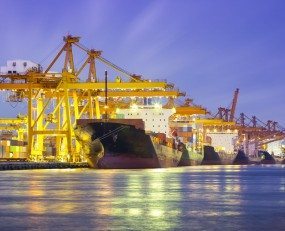
The heightening tensions between the US and China have raised the prospect of the development of two distinct supply chain hegemonies, in which competing suppliers, strategic technologies and critical components are kept discrete for reasons of national security. However, given the complexity of international relationships, especially between the West and the developing world, it is inevitable that many emerging countries will not want to be coerced (or at least encouraged) into a paradigm where they have to embrace one side or the other.
Latin America is a case in point and the region represents a major headache for the Biden administration. Many local politicians, even some closely aligned with the US, feel that they have been ignored by their neighbour for too long and consequently have been open to China’s offer of funds and access to its market, regardless of the political strings attached. In fact, over the past decade China has replaced the US as the major trade partner for the majority of countries in the region, with the exception of Mexico.
China’s Belt and Road Initiative (BRI) has provided a huge source of investment with 19 out of 24 Latin American countries signing up in one form or another. This has meant that many supply chains have become ‘sino-centric’ with the consequence that businesses in countries which have resisted the temptation of Chinese money have been ‘locked out’ of lucrative contracts.
The massive sums invested do not mean that the US has lost all its political and military influence in the region. However, many of its neighbours are unwilling to make economic sacrifices for the US when they have little idea of what they can expect in return. What’s more, China doesn’t just offer commercial opportunities. As part of a ‘hearts and mind’ campaign it donated millions of vaccines throughout the Covid crisis as well as Personal Protective Equipment (PPE), winning significant political goodwill.
Despite this, China’s economic sway is still largely limited to infrastructure building and the sourcing of raw materials, whilst the US has much more influence in the high tech and communications technology sectors. This is where key supply chain battles of the future are likely to be fought. For example, former president Trump agreed a deal with Ecuador that would enable the country to pay down its debt to China as well as allowing investment in its oil and infrastructure sectors so long as it did not allow Chinese tech company, Huawei, to participate in the development of its 5G network. However, given Huawei’s strong presence in many other parts of the region, this particular supply chain battle may already have been lost.
It is not just China which the US has to worry about. Russia and Iran are also making overtures to governments in the region. Russia, for instance, has threatened to deploy military forces in Cuba, Venezuela and Nicaragua partly in response to the international community’s condemnation of the invasion of Ukraine and partly due to a longer standing strategy of projecting its power into ‘America’s backyard’. India and Turkey are also pursuing their own agendas and, along with the other emerging international powers, are promoting a ‘multi’ rather than unipolar world as being in their best interests. As Spanish foreign affairs think tank, Real Instituto Elcano, put it, these countries are, ‘…challenging US hegemony and trying to displace it economically, technologically, militarily and commercially [from the region].’
The Biden administration is aware of these risks and has attempted to re-boot its relationship with its southern neighbours through the ‘Americas Partnership for Economic Prosperity’ initiative. However, this got off to a rocky start when it launched at a conference in Los Angeles in June 2022 when several heads of state were either excluded or stayed away. Biden’s plans include increased roles for the Inter-Americas Development Bank and the creation of new jobs through clean energy technology. However, this raises the question, will the US be happy to share technologies with Latin American businesses which may also work with the Chinese?
The issues which the US faces in Latin America will inevitably be replicated in Africa and Asia where China’s influence is already endemic. The US has considerable economic, political and military power, of course, but it, and the West as a whole, has already ceded much ground to its geo-political rivals. Investment by Western banks in emerging markets is currently shrinking at rates not seen since records began in 2005 and the vacuum that this will create is likely to be filled by Chinese money, only increasing its political influence. With this as the background, the development of ally-sourcing strategies – the creation of secure supply chains involving known and validated suppliers located in friendly countries – may only act to exclude and alienate emerging markets further, not least increasing the gap between the technology haves and have nots.
Source: Transport Intelligence, 9th August 2022
Author: John Manners-Bell